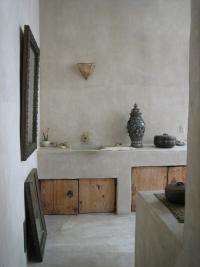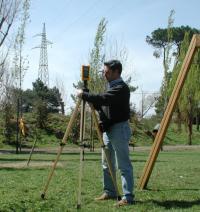Choose to live in a sustainable building, it will be the first step to improving your well-being and to promoting a healthier environment for the future
The value of biocompatible materials
Have you ever thought about how important a simple action, such as renovating your house, is for your health and well-being?
Depending on the materials and installations chosen for refurbishment, this action can trigger radically different mechanisms.
Any building material has its own life cycle: production - distribution - use - disposal.
Many processes used in the production of building materials can cause pollution of the environment.
It is useful to consider an example:
The production of one ton of wood consumes between 5 and 200 kWh
The production of one ton of aluminum consumes up to 72,000 kWh
Since the amount of primary energy consumed is directly proportional to the emission into the atmosphere of harmful substances (amongst which is carbon dioxide the gas mainly responsible for the greenhouse effect) it is easy to understand how the choice of a biocompatible material is better not only for us but also for the planet.
The function of a house or building can be considered as providing us with a ‘third skin’ (akin to the clothing industry seeing clothes as our ‘second skin’) as nowadays the majority of our time is spent indoors.
The concept of "third skin" does not merely refer to a protection factor for buildings but also to the exchange performed by the surfaces delimiting a space, a function similar to skin.
For example, in a bio-ecological treatment natural paints are used that allow for transpiration rather than those that clog pores. Natural paints contribute to the climatic control of the house whereas conventional paints create an insulating layer preventing the mixing of indoor and outdoor gases and water vapour exchange. .
The "well-being" we feel in our living spaces has much to do with the building materials used and their combinations, decorative objects, surface treatment, light and color set up, structures and of course, construction methods.
A healthy life in a pleasant atmosphere must be made possible not only in a home, but also in working and education environments and this is not always easy to achieve in the era of chemicals and plastic.
QUALITY
Our quality of life depends also upon the environment in which we live.
The principles of organic architecture respond to the need for psychological well-being, and are based on the use of environmentally friendly materials and technologies, with the goal of ensuring quality conditions inside buildings otherwise generally built with materials which are in large part responsible for the emission of harmful substances for the health of mankind.
For decades, green architecture and green building have developed thanks to the determination and the consciousness of people that have tried to create a better and healthier environment for themselves, for the earth and for others.
SAFETY
Ecological architecture is the only type that complies with the EU Directive (EEC / 89/106) setting forth the "Essential requirements for construction products", and Directive 2002/91 / EC on the energy performance of buildings.
Each product used with CE labels, ECOCERTO, ECOLABEL, ensures regulatory compliance.




